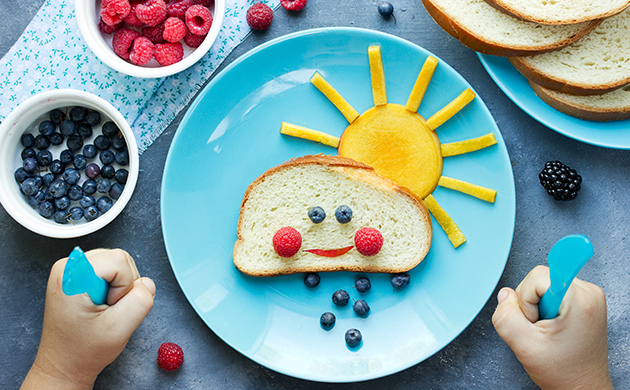Toys for kids are an important and fun part of every child’s development. But they, too, come with risks. Choking is one of the major hazards for kids aged three or younger because they tend to put objects into their mouths. So, parents need to check out their children’s toys and supervise when they play. This blog will help you learn important things to consider when buying baby toys.
Toys and eye safety
Your children’s vision plays a crucial role in their growth and development. This is why parents need to keep a close eye on their child’s visual health, including protecting them from the risk of eye injuries. If data is to be believed, over 225,000 toy-related eye injuries occur annually in the US. Therefore, getting the right toys for eye safety is a concern for every parent. Kids are born with an undeveloped visual system that grows with them. During normal infant vision development, newborns can see objects only up close, and toddlers and preschoolers commonly are farsighted. While some school-going kids need eyeglasses to have clear vision. Throughout their growing years, nothing can stimulate a child’s vision more easily than a toy. But one should also remember that most childhood accidents occur at home because of toys.
Children spend a lot of time playing with their toys, so you must ensure they are safe in your little munchkin’s eye and for overall health. Generally, toys are not safe; it’s because they are not age appropriate for your kid.
Eye-friendly safe toy checklist
How can you prevent injuries related to toys? Be careful when it comes to the toys or gifts you offer to children. Read the toy’s label first to determine the age and skill levels recommended. Here is a guide to different types of toys that can cause many eye injuries. Here are some tips you can consider before offering a toy to your kids.
-
- Buy toys as per size
Building blocks are safe for children of all ages, but edges and corners should be blunted to reduce the risk of eye injury. The size of a toy is also important. If a child is big enough that it can’t fit enough in the child’s mouth, but can be divided into smaller sizes, put the toy away from your child until they get a little older.
Furthermore, smaller pieces can be found in toys labelled for children aged three or above. If your child is four years old and still likes to keep things in your mouth, these toys are inappropriate for development purposes.
-
- Pick age-appropriate toys!
Make sure you read the label on the back of a toy before buying it, and don’t buy a toy not meant for your child’s age group. Be sure to pick age-appropriate toys, whether you are gifting your friend’s child or your own. For example, mobiles with big and colourful objects are best for three- to four-month-old babies. They help improve a child’s visual reflexes and ability to focus. Buy appropriate toys for infants that can reach for hold, suck on, shake, and make noise with squeeze toys, soft dolls, large rings, teething toys, and board books.
-
- Get developmentally appropriate!
Developmental toys help stimulate a baby’s mind as they progress to new developmental milestones. Your toddler also will start to differentiate shapes and colours. So, pick baby toys that are colourful, bright, and fun for little hands. By the time they reach age 2, most toddlers can kick a ball, draw quickly with a crayon, and build towers four or more blocks tall. When your child turns three, they can solve simple puzzles and pedal a tricycle. While giving attention to a toy’s recommended age range is important, it is just a part of toy safety guidelines, and you know your child best. If a four-year-old kid still keeps things in their mouth, they should not have certain kinds of toys. If you think your child is a little less coordinated, choose their toys wisely.
-
- Invest in safety eyewear for your child!
One of the most effective ways to protect your child’s eyes is to make them wear safe eyewear. Many protective eyeglasses are made of polycarbonate, known to have great durability and impact resistance.
-
- A big no to toys with sharp edges or protruding features
Toys that come with protruding features or that can be projectiles, such as darts, arrows, and airsoft guns, may seem exciting, but the problem with such toys is that they are more likely to cause traumatic cataracts, corneal abrasions in children, and other eye injuries. Choosing non-toxic toys for your children can reduce the risk of infection and injury.
-
- Larger toys can be a safer option
Size matters when it comes to purchasing early childhood toys. Larger toys are made to be less likely to break and cause eye injuries. They are good for kids who are still developing their fine motor skills.
-
- More information on what to avoid
Do not pick toys that shoot objects in the air, such as dark guns, arrows, and slingshots, especially for children under six years of age and closely keep a close eye on kids playing with such toys. If your child is old enough to play with a chemistry set or woodworking tools, make sure they wear safety goggles.
When buying for birthdays or other special occasions, pay close attention to the age or recommendations on developmental toys. Parents should understand that such recommendations are released for a reason. Some parents or grandparents may think that a toy looks clean and fun to play with when, for safety reasons, such toys for kids should not be brought for a child of a certain age.
Takeaway!
Remember above given tips above when you buy toys for your child. Let’s provide children with accident-free playtime by choosing safe toys to enjoy a long life of clear and healthy vision.




